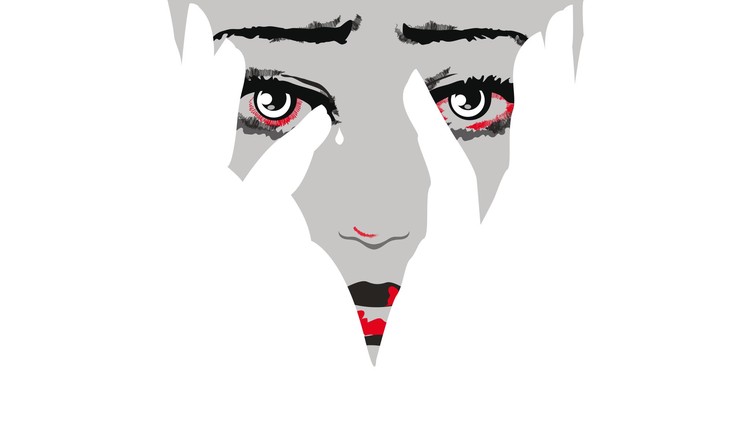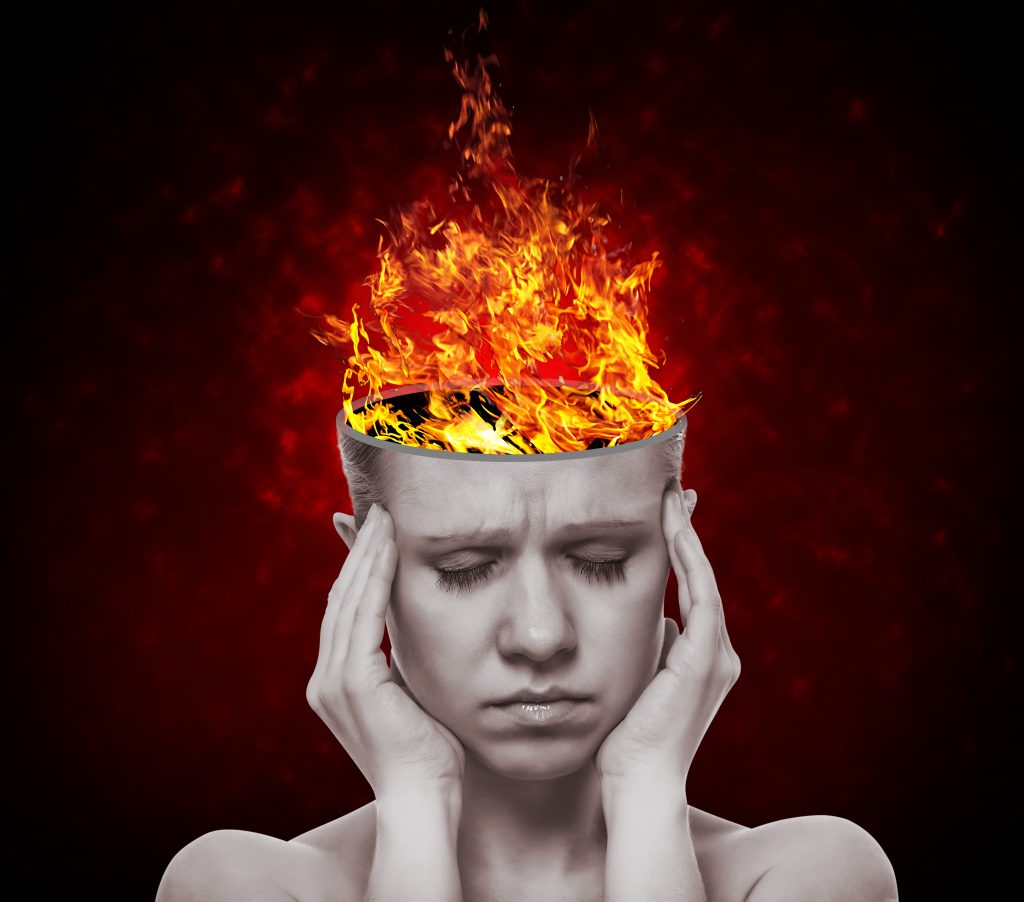What exactly are “mental health problems”?
In the mainstream, psychological difficulties are seen as “symptoms” of an “illness” or “mental disorder” and based on this the focus is put on suppressing them, either by using drugs, or shock, or by psychological interventions that also aim to “eliminate the problem.”
Unfortunately, this mainstream approach often works poorly, and too often its main effect is to aggravate the problem, or to cause “collateral damage” as critically important parts of the person are suppressed along with the supposed “symptoms.”
But if we want to replace the mainstream approach, we need a coherent alternative view, which realistically frames both the difficulties people experience and suggests better approaches to resolving those problems.
One avenue to this needed reconceptualization was expressed by Jacqui Dillon, who wrote that “When you understand your own ‘symptoms’ as meaningful and essential survival strategies, a more respectful and loving acceptance of yourself begins to emerge.”
I like a lot about that perspective and the shift in attitude it suggests. It helps explain why the traditional approach does so poorly – it’s difficult to heal if we are thinking of essential parts of ourselves as an illness!
There is one possible complication with this perspective though: if we think of disturbing patterns of experience or behavior as being “essential” then we might also feel stuck with them just as they are, with no alternative but just learning to accept and respect them no matter how much trouble they are causing.
One way out of that bind is to think of “symptoms” as meaningful strategies that do fit and are indeed essential in some kinds of situations, but which also are often put into action unconsciously or without much thinking or in mistaken ways. That is, at times they may be truly necessary for our survival, at other times they only seem necessary to some part of our psyche that activates them, while in reality they may be “going too far” and backfiring with destructive effects.
Defining them this way allows for more ambiguity, and suggests that each strategy etc. must be looked at in context, to sort out what really is essential or at least helpful in a given situation from what is well intended but misguided, and may be currently destructive. From that perspective, what we need is not wholesale suppression of what disturbs us, or complete acceptance, but rather an increase in discernment about what strategies are working or not, in particular situations. A strategy that truly was lifesaving during a traumatic situation, for example, may be extremely damaging when carried on into everyday life: but if we can appreciate the way it saved us at one time, we may also be better able to “let it go” in a present that no longer requires it.
To clarify this reconceptualization, what I would like to do now is to outline some of the major categories of psychiatric “symptoms” and describe how they can be reframed as possibly helpful, though often harmful, strategies:
Anxiety and Worry: Most of us can identify times we didn’t worry enough about something, or when we ignored our anxious feelings, went ahead and did something, and then experienced some kind of disaster as a result. So it’s not too hard to see how feeling anxious and getting worried is an evolved strategy that helps us deal with various sorts of threats. These kinds of feelings disturb our calm, but they often do so when we need to be disturbed so we will change our direction in order to face some kind of problem.
Of course, it’s also possible to go way overboard with anxiety etc. But instead of attempting to suppress it in a wholesale manner, we can learn to listen in a discerning way, making judgment calls about how much time to spend worrying and how seriously to take anxious feelings. We won’t always be right, but our competence in doing this can evolve over time, especially when we collaborate with others, talk things through, etc.
Depression: Many people can see no point whatever in depression, and so they would be just as happy to exterminate all depressed mood as they would to eliminate the polio virus! But there is a lot of evidence that depression has evolved as a way to do things like slow down and accept defeat when that has become inevitable and/or to narrow one’s attention to focus on a problem that must be solved before further progress can be made.
Let’s say a person is experiencing problems in a relationship. Getting depressed might move the person toward giving up on the relationship, and that could be a good thing if the relationship is severely flawed anyway. Or getting depressed could help the person slow down on “business as usual” just enough to be able to sort through what has to be changed to make the relationship work. Of course, like any strategy it can also be used inappropriately or can backfire: a person might get depressed and give up on a relationship that might otherwise have been great, or getting depressed about possibly minor problems might itself cause other problems that then become very serious.
And we might note that while “positive thinking” can be helpful if the depression is not helping at the time or if it is based on perceptions that are inaccurate, it is itself prone to backfiring if for example the “positive thinking” is too simplistic and too “positive” to fit the situation. Investing lots more time and energy into a very bad relationship based on “positive thoughts” about it, for example, can be quite detrimental. (I might note that while CBT is often associated with encouraging “positive” thinking, the more collaborative forms of CBT use more discretion and aim to encourage positive thinking only in situations where it seems likely to be helpful.)
Mania: While being manic can get people into horrible trouble, and set people up for going into a long depression in response, the state of being manic can also be functional in some situations.
One such situation is where a new opportunity has opened up, but taking advantage of it requires an intense burst of energy and enthusiasm, and a willingness to make a sharp and extended break from usual patterns and routines. Only people with an ability to become manic may rise to the top in such situations.
Another type of situation might be where a person has been fed way too many “negative” perspectives on themselves and on the world, and feels mired in that negativity. Getting manic or grandiose, just ignoring all the negative feedback and negative perspectives, might allow the person to get moving again.
In mania, our sense of moderation is lost. But there is some sense in the slogan “all things in moderation, including moderation!” Sometimes moderation is not the best strategy.
So mania can be seen as a high risk but still sometimes useful strategy. Of course, if one is getting more manic than is helpful in their current situation, that can be a huge problem, so people do need to learn to “rein it in” in order to avoid various kinds of disasters.
“Psychotic” Thinking: Psychotic thinking typically involves being open to forms of thinking that are uncommon in one’s culture, and/or to being closed off from, or rejecting, patterns of thinking that are culturally common. This can lead to all sorts of problems or errors, but common sense tells us that this same kind of process can also lead at times to new patterns of thinking that are truly helpful.
Research has shown that when people are trying to solve a problem but have no idea how to solve it in any straightforward way, that they open their mind to seeing all sorts of otherwise improbably patterns, and this can lead to what we think of as “psychotic” perceptions and forms of thinking. It can also, of course, at times lead to finding an approach that does solve the problem, which is why we have probably evolved to sometimes process things this way.
Research has also shown that when we firmly believe something, we are prone to look for evidence that confirms our belief, and to discount evidence that disconfirms it. Getting caught up in what is called “confirmation bias” can make us hold onto crazy beliefs – but it can also help us hold onto a helpful belief even in the face of social pressure to believe otherwise, because we learn to tune out that pressure, and only listen to the source of our truth.
Psychosis itself can best be understood not as an “illness” but as a high risk problem solving process. It can lead to a range of outcomes in the same way as does revolution in a nation, which can result in both utter disasters and also successful reorganizations that lead to thriving at new levels. In my own experience, being somewhat “psychotic” in my youth led to just such a successful reorganization, helping me overcome my earlier psychological deficits. But I’ve also seen family members and others fall into disorganization/attempted reorganization and stay stuck in it. Here again, just as in the case of revolution in nations like Syria, it often seems it is the “helpful” interventions of outsiders that prolongs the conflict and escalates the chaos.
A big problem is that if all of the above forms of mental and emotional functioning are really strategies, actually useful in some situations, then efforts to suppress them long term are inevitably going to be disabling to the person, as they are all in some way part of healthy functioning. Also, it is likely at some point the person’s mind with “fight back” against attempts to disable something which is actually vital to the person, and then, paradoxically, this “fighting back” will seem to make the suppression seem even more necessary. This also helps explain how “symptoms” typically seem to “rebound” whenever attempts at suppression, be they in pill form or mental efforts toward suppression or distraction, are interrupted.
When we instead see mental disturbances and disruptions as being possibly strategic, possibly helpful, then the focus naturally shifts to an emphasis on discernment. This implies a very different relationship with one’s difficult experiences.
Real mental and emotional healing happens when we come to value all the parts of ourselves, and integrate them into one whole, with an ability to call forward the parts of ourselves that fit a current situation. We do need the ability to set boundaries with various parts of ourselves, to temporarily suppress once kind of reaction (such as anger, sadness, etc.) so we can call forward some other approach that may better fit a current situation, but this works best when accompanied by the respectful and loving acceptance of the very parts that we are setting boundaries with – we know they belong with us and have their place, even if they aren’t what we need in the current moment!
When we recognize that a disturbing part of ourselves really belongs to us, then we are also more willing to empathize with it, to “go with it” or look at the world from its perspective for just a bit, to see what it wants to do for us, what need it wants to meet. This allows use to make peace with it, to integrate with it. Peacemaking and integration with parts of the self is often like making peace with family members, or neighbors: it requires a mix of concern for the other, along with some limit setting.
The opposite of integration is dissociation, the state we are in when parts of ourselves function separately and may even battle with each other. Dissociation is often thought of as something a bit exotic, but actually it is part of everyday life to some degree, and like other things, is a helpful strategy when it isn’t overused and so causes problems.
It is commonly known that severe forms of dissociation are usually a response to trauma. In a traumatic situation, our ability to balance opposing tendencies or possible strategies in our minds understandably goes out the window: the need instead is to quickly pick an approach and put all our energy into it, while suppressing everything else. But then when trauma is very intense or prolonged, we can have difficulty returning to balance, discernment and integration.
Instead, we may find ourselves at war with ourselves, even long after the trauma is over. One part of ourselves may want to remember and focus on the trauma and being hypervigilant and distrusting, to avoid chances of the same thing happening again, while another part wants to forget the trauma, and to relax and start trusting again so we can go on with everyday life. There can, of course, also be more complex splits. When we try and suppress some of the split off parts, they can come back as voices, and their seeming autonomy may make us want to focus even more on suppression.
So the paradox is that the more divided we are, the more suppression seems to be the answer, but in the long term suppression just reinforces the problem which is lack of integration. We do need the ability to set boundaries with parts of ourselves or with different emotions, patterns of thinking, strategies, etc., but also to find a place for all of these things and appreciate their efforts to be helpful and the sorts of situations when they actually are helpful.
There’s lots more that could be said on this subject: this blog post is just my attempt to scratch the surface! For those who are interested, many of these subjects are explored in much more detail, with a particular focus on “psychosis,” in a new online course I have just released, titled “Working with Trauma, Dissociation, and Psychosis: CBT and Other Approaches to Understanding and Recovery.” This course provides 6 CE credits to most US professionals, with lifetime access to the course videos etc. It is available until 6/1/16 for just $25, or even free to non-professionals, also just until 6/1/16.
One final point: I should emphasize I am not saying that physical health issues never play a role in creating psychological difficulties. They certainly can: it’s difficult to practice discernment and balance in our strategies when the brain is challenged by various factors ranging from substance abuse to various physical maladies or inflammation to nutritional deficiencies! So it always makes sense to see if any improvements can be made on such fronts, but what doesn’t make sense is to frame psychological reactions themselves as “illnesses” requiring suppression. Let’s move towards a wiser, more nuanced, and compassionate approach that can set the stage for real healing.




Ron, what should we do about the “strategies” employed by “First-Order Psychiatry” (see Bruce E. Levine’s latest post) that gives heavy-duty drugs to children who are trying to process their trauma? The same “First-Order Psychiatry” that systematically eliminates every other kind of help they desperately need at this time of crisis? (Again, see Bruce E. Levine’s latest post on his blog–“Real Politics 101, Part One: ‘First-Order Psychiatry’ vs. the ‘Rehumanizing Resistance'”)
dkjamil, you ask a complex question! My own piece on this has been to work to increase awareness of what goes wrong in conventional psychiatric approaches, and to show that something else is possible. But I hope Bruce has more ideas that he will share in his follow-up posts.
Bruce said in his post he will share his ideas about what can be done, but I asked the question now because of something you said near the beginning of your post under “Depression.” When we are dealing with psychiatry, the emphasis is on exterminating the mental health problem, whether it be depression or anything else, just as if it were the polio virus. So do we take the attitude that defeat is inevitable and surrender to the drugging and lack of effective alternative help, or do we “narrow” our “attention to focus on a problem that must be solved before further progress can be made?”
I certainly wouldn’t be blogging etc. if I thought defeat was inevitable! And I think there is a time for getting more narrow, and a time for expanding the focus – when dealing with a many sided beast like the mix of traumatized people and then the misguided and often corrupt attempts to “help,” I think there will be different missions for different people at different times – some for example to create “islands” where things are done in a better way, some to face and point out the corruption and mistakes in a more head-on manner, some to figure out how to communicate all this to the masses, how to change our culture…..
What we are faced with in all this is the very real problem of drugging, whether it be prescription or street, forced or seemingly voluntary. That is why your “narrow one’s attention to focus on a problem that must be solved before further progress can be made” caught my attention. Gabor Mate` focuses on the drug problem in his book “In the Realm of Hungry Ghosts.” He says we need “…islands of relief where a need to soothe pain does not constantly drive a person’s motivation.”(p.317) He goes on to say, “It requires a complex and supportive social environment…” and later, “There is no island of relief, only oceanic despair.”(p.319) Then, what I feel is his most relevant statement that would apply to any kind of drug addiction, “Rather than exhort the addict to be other than the way she is, we need to find the strength to admit that we have greatly exacerbated her distress and perhaps our own. If we want to help people seek the possibility of transformation within themselves, we first have to transform our own view of our relationship to them.”(p.319)